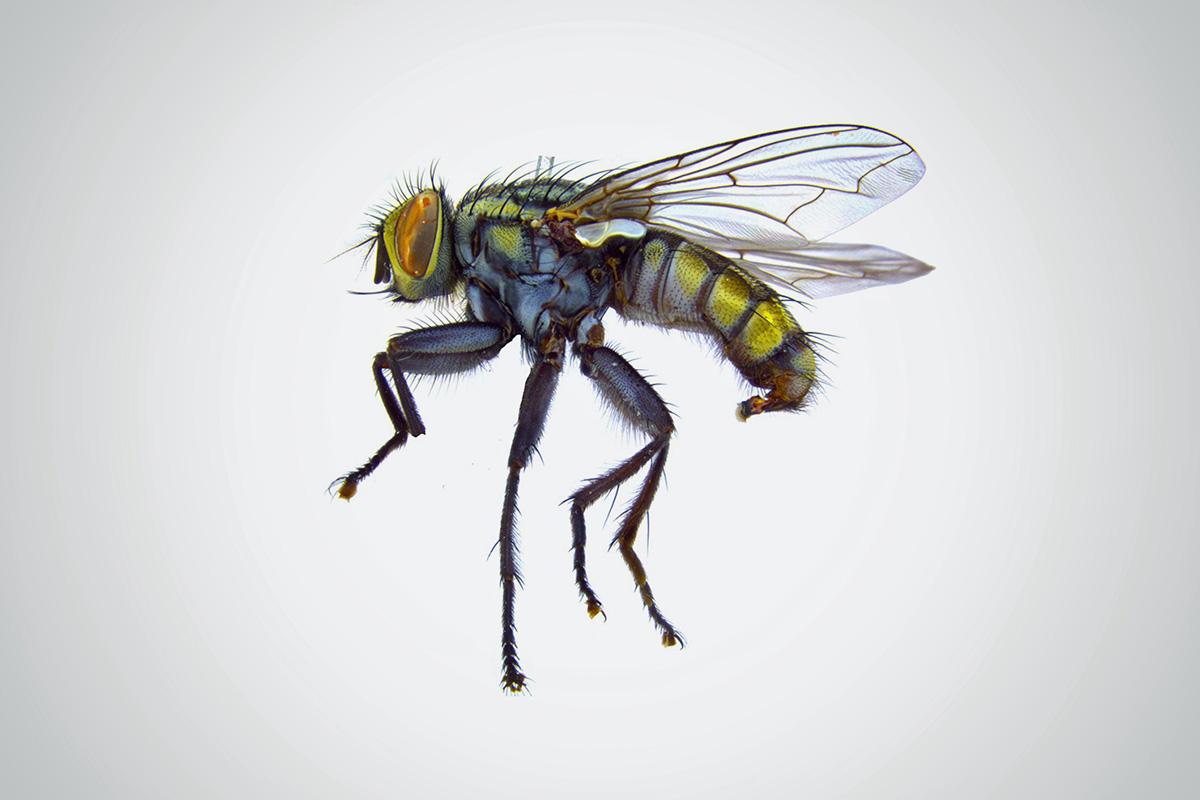An international research team led by Eliana Buenaventura of the Museum für Naturkunde Berlin published a new study in Systematic Entomology, which deals with the genital examination of male flesh flies (Sarcophagidae) and the analysis of more than 900 genetic regions in order to gain new insights into their evolution. The fly genitalia are useful for fly identification, but the way the genital structures have evolved over evolution needs to be better understood. As scavengers and nutrient recyclers, these insects are useful to the ecosystem and indispensable to each and every one of us.
Flesh flies (Sarcophagidae) are one of the most species-rich of all fly families. Most species of this family are scavengers, i.e. they lay their eggs or larvae on dead bodies to feed on them and this way they recycle nutrients. If there were no flesh flies, our lives would also be unbearable and the earth full of carcasses. Therefore flesh flies are very useful for the whole ecosystem and can be found all over the world. Flesh flies can be DNA tested to determine on which animals they have been sitting, and this allows conclusions to be drawn about biodiversity in a particular area.
So far, there has been little molecular data to answer questions about evolution and biodiversity. Thus, the new study drastically increases available molecular data from different evolution lineages within the very diverse flesh fly family and from all biogeographical regions. This analysis of the largest molecular dataset ever produced for a phylogenetic analysis of a fly lineage. Our research group was able to find out that the traditional classification of flesh flies, based on morphological features including the male genitalia, produced phylogenetic relationships that are in conflict with our molecular data. Thus, the re-examination of morphological structures provides new insights into the evolution of male genitalic traits within Sarcophagidae and highlights how they tell a different story regarding the evolution of these diverse fly group.
Eliana Buenaventura is head of the Diptera collection of the Museum für Naturkunde Berlin and works at the newly founded Centre for Biodiversity Discovery of the Leibniz Research Museum. About one and a half million prepared flies and mosquitoes are present in the research collection and, as a global research infrastructure, are available to researchers worldwide for their work for nature. The collection is an extremely valuable resource, since some species are no longer present in nature due to the loss of species and habitats. On the other hand, new species are constantly being found and researched in the collections.
Published in:
Eliana Buenaventura et. al. Anchored hybrid enrichment challenges the traditional classification of flesh flies (Diptera: Sarcophagidae). Systematic Entomology (2019), DOI: 10.1111/syen.12395
Pictures:
http://download.naturkundemuseum-berlin.de/presse/Fleischfliegen
